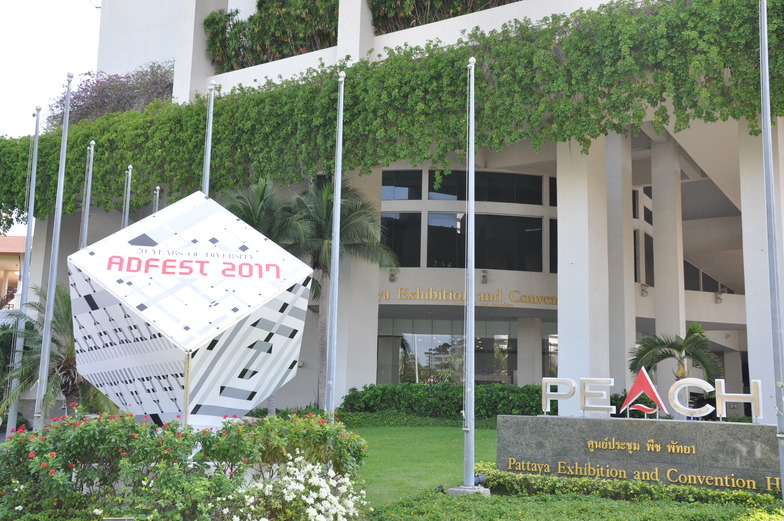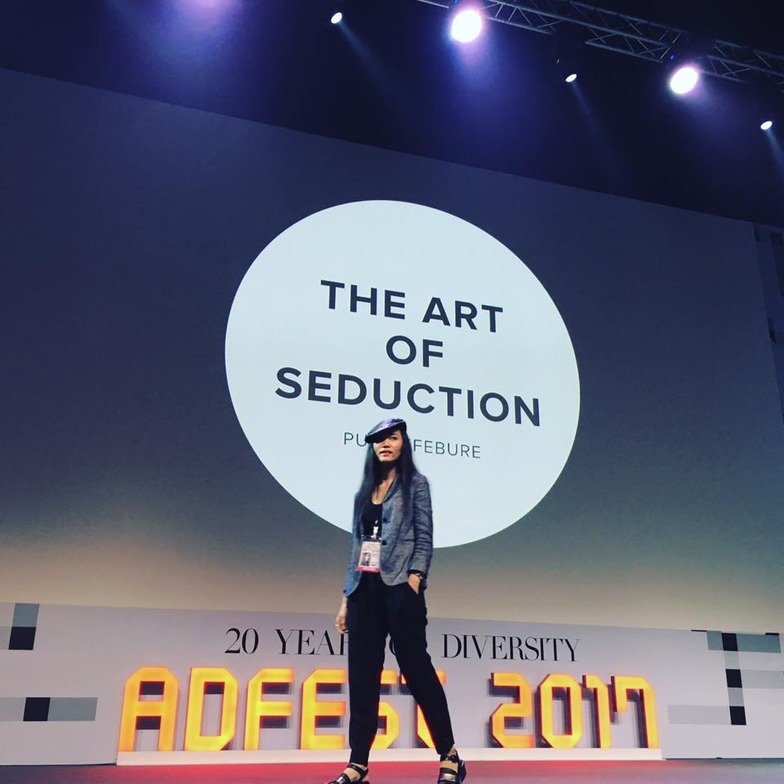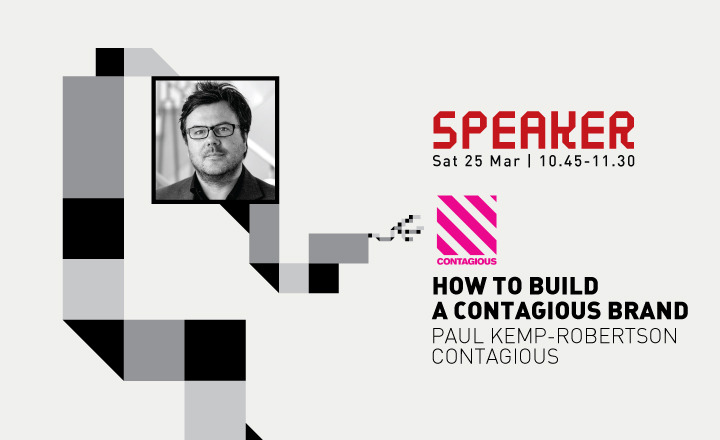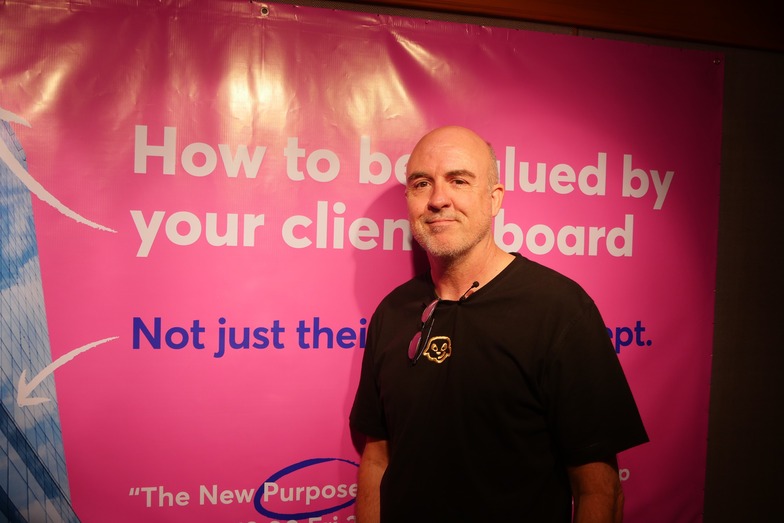Note: This website was automatically translated, so some terms or nuances may not be completely accurate.
The Concept of Non-Broadcast Advertising

Higashi Naruki

ADFEST, 20 Years of History
Hello, I'm Higashi, a copywriter at Dentsu Inc. I work in the art field as the executive director of the art marketing project "Bijutsu Kaido."
I attended ADFEST, one of Asia's largest advertising festivals, held from March 22nd to 25th. Drawing on my experience as a reporter at Cannes Lions in France, I gathered fresh insights. This year marked ADFEST's 20th anniversary, and co-founder Jimmy Lam presented the story of its creation.
It all began back in 1994. The origin story started with a conversation between two jurors in Cannes. Those two were Jimmy Lam and Vinit Suraphongchai. Both film jurors, they were sick of cheese and French bread and slipped out of the venue on the third day of judging. While eating their favorite Vietnamese noodles, they had this conversation: "It costs too much to come all the way to France." "Isn't the beach in Cannes pretty much the same as the beach in Pattaya (Thailand)?" They hit it off. This sparked the creation of ADFEST, which began in Chiang Mai, Thailand, in 1998.
Entries, which initially numbered less than 500, have expanded to 3,011 this year. Attendees, fewer than 500 at first, have grown to 1,342 from 72 countries (as of this presentation).


Compared to Cannes Lions, ADFEST felt more approachable, with speakers and judges closer and easier to talk to. Lunch was provided every day during the four-day event. Parties were held daily except one, allowing networking without worrying about job titles.
While enjoying Thai food, I spoke with judges at the forefront of creativity, editors-in-chief, and founders of design firms. Multiple people mentioned, "Advertising floods the world. Human attention spans are 8 seconds." So I asked them: How can we create ads that stand out from the information overload and truly capture people's hearts?
The Concept of Advertising That Doesn't Broadcast
1.Creative Un-Branding
First, let's look at the story of Pum Lefebure, co-founder of DESIGN ARMY, a design company in Washington, USA.

According to Microsoft research, the average human attention span is 8 seconds—shorter than a goldfish's and down from 12 seconds in 2000.
With such limited attention for ads, what if instead of pushing product features or company logos, we offered experiences people crave—and let them realize later that the product made that experience possible? Pum calls this "Creative Un-Branding" and shared examples.
Take RH Chicago, a furniture store. Pum found it distracting when salespeople approached him while he was calmly browsing furniture.
So, RH Chicago decided not to sell furniture in a furniture store, but instead created a cafe (http://3artsclubcafe.com/). By using their own products as cafe tables and sofas, they created a system for customers to experience the products. Pum asks, "Who spends two or three hours in a furniture store?" This is possible in a cafe. They've created a "Creative Un-Branding" system where the service comes first, and the product becomes apparent later. I asked Pum, "If you wouldn't call the examples you introduce 'advertising,' what would you call them?" The answer was "design."

Co-founder of DESIGN ARMY, a Washington-based design agency.
2.Don’t beg.

Have you heard of MailChimp? It's a company that helps with online marketing, primarily through email newsletters. Now, can you pronounce this company's name? It's "Mail-Chimp." However, it seems people often mispronounce it as "Mail-Kimp" or remember it incorrectly.
So Ted Royer, Chief Creative Officer at Droga5, created videos and posters using the mispronounced name as the title.
・" MailShrimp" (Mail Shrimp): A shrimp sandwiched in a burger sings at the post office.
・A dog covered in kale shivering ( "KaleLimp, " meaning limp kale)
And so on—nine expressions were developed that barely evoke the brand.
Watch the video. Can you spot the client's name? The answer is revealed briefly in the credits at the very end. But apparently, they were instructed to "make the logo small." What kind of company asks for a smaller logo?
Those curious about the name who search are guided by suggestions like "Could it be MailChimp?" to a page introducing the company. Some might think, "What a playful company, messing around with its own name." This page states that's the kind of brand MailChimp wants to be.
Ted's approach to creating this ad is summed up as "Don't beg." Rather than desperately trying to convey the company name and information, it's a more forgiving mindset—one that even lets the wrong name slip through.

Chief Creative Officer at Droga5.
3.First, something that moves me

New technology is effective for moving viewers' hearts. On the other hand, cutting-edge technology is often unfamiliar to clients, making it difficult to secure budgets without understanding. How can we gain understanding for new technologies? We spoke with Paul Kemp-Robertson, co-founder of "CONTAGIOUS," which shares cutting-edge creative insights, including technology. "First, read CONTAGIOUS," Paul quipped, kicking off the conversation.
"The best way is to let them experience the technology firsthand. Take clients to events like SXSW (South by Southwest). Or set up a gathering with startups and invite companies to experience it. Here, it's effective for clients to forget their role and simply engage with the technology as individuals, letting it move them. Clients get to experience cutting-edge technology ahead of the curve."
The key to using technology is first being moved by it yourself. By the way, Paul is also the editor-in-chief of the magazine "CONTAGIOUS." How do you gather information ?
"We have a research department. We gather a lot of news, attend events, and host our own. If companies want to conduct research systematically, they could create a department like the '5% Club,' where they invest a percentage of their profits into researching new technologies."
I immediately got my hands on the magazine version of "CONTAGIOUS." It centers its interviews and research around questions like: "When do customers switch brands?" and "What will be the biggest challenge in 2017?"

So far, we've introduced the concept of non-broadcast advertising.
What kind of impact does winning an advertising award have on society?
Even before arriving in Thailand, I had a prepared question: "What impact does winning advertising awards have on society?" While winning awards holds meaning for individuals and agencies, does it hold meaning for society?
First, when Matt Noonan asked at the end of the seminar, "Does anyone have any questions?", I decided to ask mine.
"It brings together scattered creative work from around the world, allowing those who usually compete to acknowledge each other's successes. It provides motivation to create better work."
I thought this was the most straightforward answer. It stimulates the advertising industry, which is part of society.

He is a film producer and founder of the production company Curious.
A workshop led by Mike Edmonds was held for a class of about 30 people. We learned that it's crucial to ask yourself what you truly want to do and answer that question. Doing so allows you to make proposals that genuinely resonate with upper management, rather than being judged solely by numbers from the client's marketing department. When asked about the social impact of advertising awards, he responded thoughtfully, "I'd like to answer this question with passion."
"The benefit of awards is that they give clients confidence that the agency they chose is valuable.
On the other hand, you can't say that award-winning work 100% increases sales. Bill Bernbach, a leader at DDB, pointed out that perhaps creatively rich advertising is following the same path as art?
Sculpture, painting, photography. Initially, patrons or clients like churches commissioned them, and they were traded commercially (Note: Think of portraits of Napoleon or royal palaces. They commissioned works to display their prestige, much like branding ads).
But as sculpture gave way to painting, and painting to photography, the outdated techniques left the commercial world and headed toward the realm of art.
Aren't award-winning ads prone to this tendency too? People share them widely; galleries and TV feature interesting ads. But while sharing these ads, does anyone say, "Hey, saw that ad? We gotta buy it"? If award-winning ads become detached from sales, I worry they'll drift further from the industrial world.
Mike was concerned that awards were being used solely for the benefit of advertising agencies. When asked, "Aren't award-winning ads also contributing to sales?", he acknowledged that this was true in most cases, but also mentioned that some agencies submit ads for awards even when sales aren't increasing. Mike was worried that seeing such agencies rejoice over awards would cause clients to lose trust.

Co-founder of Meerkats. Believes the key to a brand's success is finding its true purpose, and supports clients in fulfilling that vision.
One judge also cynically observed the work, asking, "Will the winning projects still be around next year? Did they just create something to enter the competition, only to stop doing it next year?" We'll explore the sustainability of ideas in the next installment with Kitano-san, featuring the creator's perspective.
I asked this question because I was contemplating the meaning of winning an award in the Young Competition. The challenge is posted online at 1 PM on Saturday, with submissions due by 8 PM the next day. In pairs, participants brainstorm solutions to challenges like "Make climate change personal. Your client is the United Nations." Around 100 teams per category—meaning 200 creators—devote their weekend to submitting proposals. Regardless of the judges' evaluations, these proposals are never implemented in the real world.
If these 200 people poured their serious weekend efforts into projects they genuinely wanted to create, I believe it could have a much greater impact on society. Being judged by the real world, rather than just a panel of judges, would also be beneficial for their careers.
I see the role of advertising awards as a mock exam to hone individual advertising skills and gain industry recognition. Awards should be used to connect with talented people who do good work. On the other hand, having 200 capable people pour their energy into projects that won't change society is a Creative Waste of Time.
When I shared this with Mike, he said, "If you have something you want to do with that time, definitely skip the awards and go do something useful for society. Winning an award and getting your name out there also has meaning. It's a personal choice."
What impact does winning an advertising award have on society? It likely elevates the quality of work within the industry and boosts creators' motivation. Furthermore, having judges evaluate unprecedented ideas fosters a system where the advertising industry pursues new concepts. I believe the purpose isn't to win awards themselves, but to apply the skills gained from the process to actual production.
In the first half of this article, we discussed "advertising that doesn't widely announce itself." When viewing advertising ideas going forward, paying attention to where the planner chooses to reveal the brand name—or where they choose not to reveal it while still conveying the brand's strengths—can offer a fresh perspective.
In Kitano's next article, we'll introduce award-winning examples based on interviews with judges and creators.
Reference) A 10-Minute Introduction to Global Advertising Awards. Understand the history of advertising festivals worldwide.
Was this article helpful?
Newsletter registration is here
We select and publish important news every day
For inquiries about this article
Author

Higashi Naruki
Recipient of the Good Design Award, Spikes Asia Grand Prix, AD STARS Grand Prix, and the Grand Prix for the Transportation Advertising Grand Prix's Most Outstanding Category. His book, "Art in Business" (Yuhikaku), systematizes practical methods for incorporating art into business. Privately, he conducts interviews domestically and internationally, contributing to media outlets and sharing content on his YouTube channel. He is developing a real estate information media platform in Dubai, a city experiencing remarkable economic growth. He left Dentsu Inc. in February 2023.